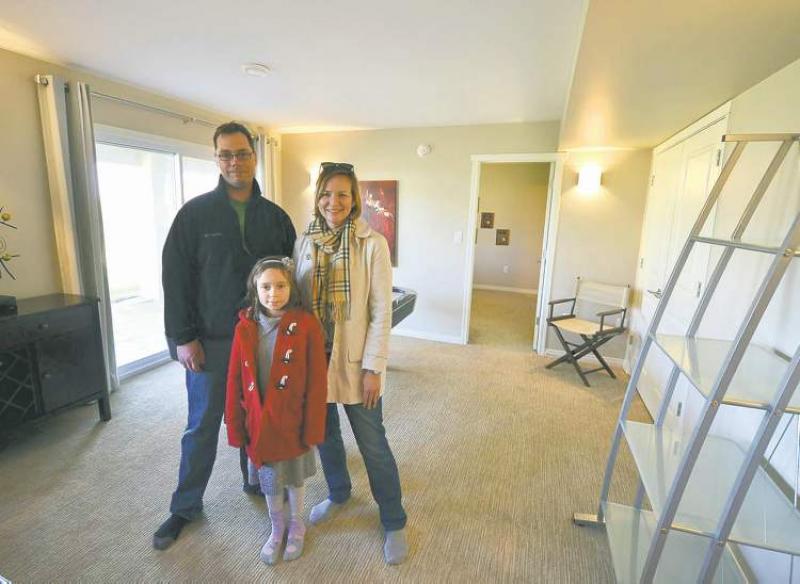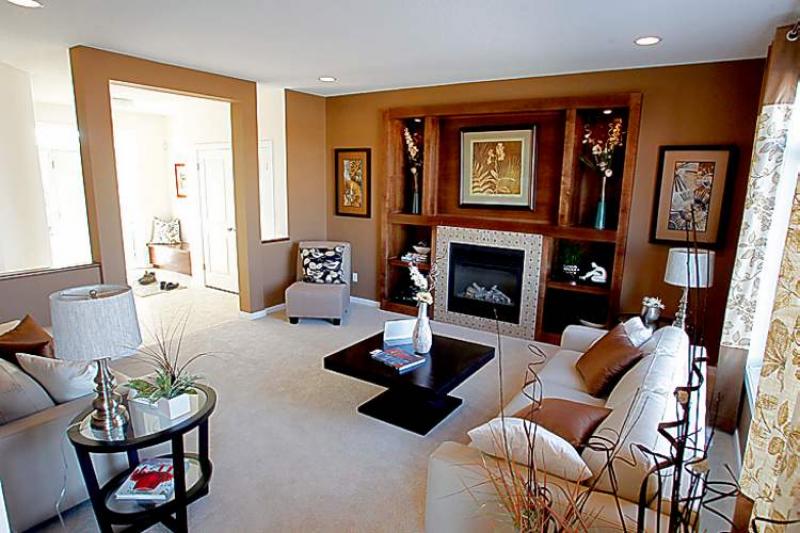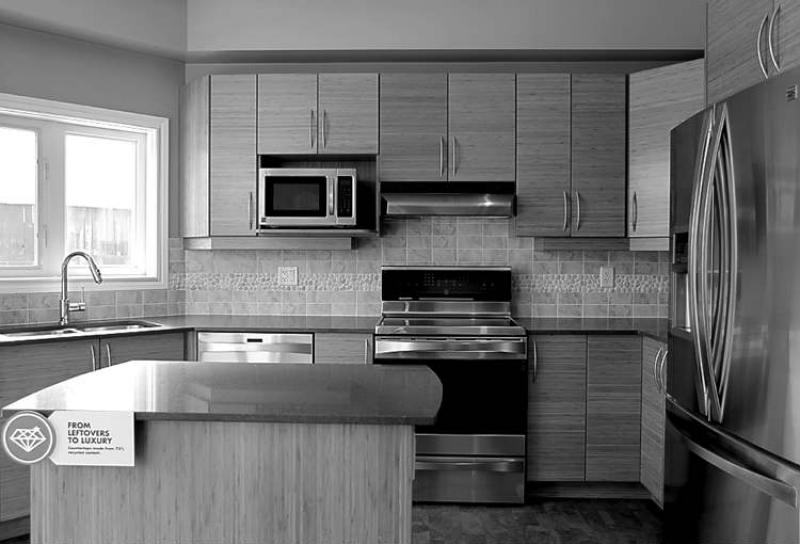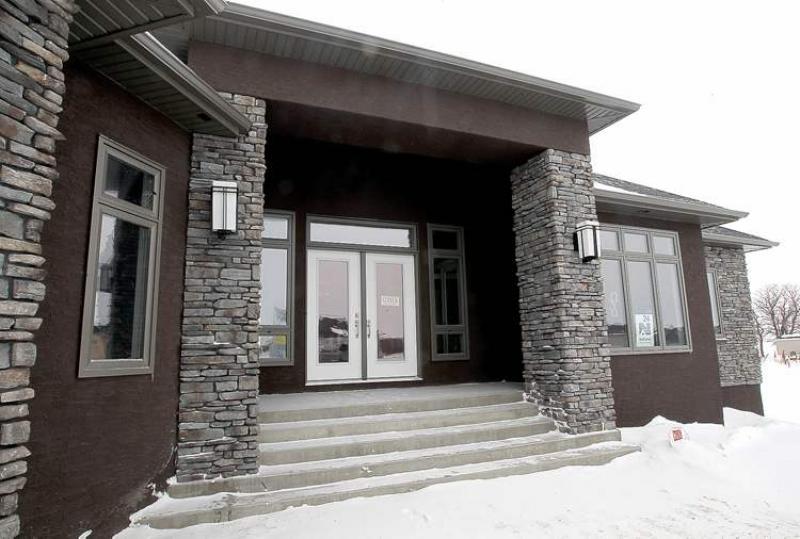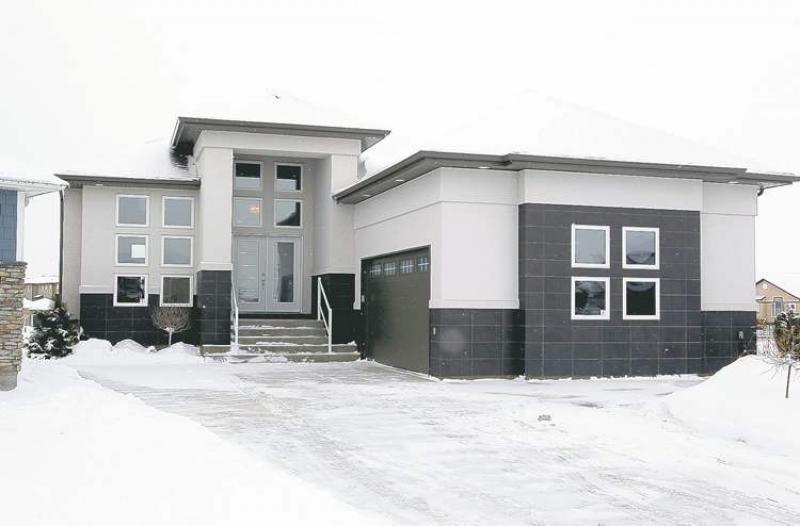New Homes
New Homes
Express your home; visit convention centre
You're itching to get outside and get your home ready for summer, but it's still a little too cold to get a proper start on your list.
There's work to be done on the yard; you've been thinking about a pool or a hot tub; the deck needs work; painting, roofing and insulation checks need to be made; and you've also got some work on the inside of the house that you didn't want to start until you were able to get some fresh air into the house.
Well, this weekend at the Winnipeg Convention Centre is perfect for you.
Saturday and Sunday are the final two days for the 2012 Home Expressions Home and Garden Show. Over 20,000 people annually visit this must see event and this year's crowds will be no exception.
All three floors of the Convention Centre are filled with the latest innovations for the home and garden. There are more than 500 booths of exciting products and information to help you upgrade your current home or to give you ideas for the design and finish of a new home.
The how is open from 9 a.m.-9 p.m. on Saturday and 11 a.m.-5 p.m. on Sunday. It's a tremendous way to spend a weekend as there is no shortage of things to see. In addition to the various exhibitor booths, there are informative stage presentations on the hour.
There are also a number of feature attractions this year. Steven and Chris, stars of their own entertaining hit CBC show, dazzled the crowd Friday and will be in town for one more show today at 1 p.m. St. Mary's Nursery and Barkman Concrete present another spectacular Garden Court.
At no other time and no other place can you do this much comparison shopping. All of the best suppliers and manufacturers in Manitoba are under one roof, presenting options for your home. Others may say that they are presenting 'show class specials', but there is only one true place where the real show specials exist -- the Convention Centre this weekend.
Whether you are home renovating, home decorating, home designing or home dreaming, everything you need is at the show. The possibilities are endless.
Drop by Saturday or Sunday to see the best and newest trends for your home and garden. Tickets are available on-site.
Mike Moore is president of the Manitoba Home Builders' Association.
New Homes
Transition period perfect time for viewing show homes
The end of March presents the perfect transition period for homeowners, home buyers and everyone else who has antything to do with homes. The Spring Parade of Homes concludes on Sunday, March 25, and the Home Expressions Home and Garden Show runs from March 30 through April 1.
This year's Spring Parade has been blessed with fantastic weather, allowing tremendous crowds to visit all 103 show homes. Although the formal portion of the Parade of Homes ends tomorrow at 6 p.m., most of the show homes that have been part of the event will remain open for viewing well after the Parade of Homes ends.
This year's entrants were an amazing collection of design, style, quality, craftsmanship and choice.
The fall and spring Parades of Homes are two showcase events hosted by the Manitoba Home Builders' Association to demonstrate the best that the new home building industry has to offer. Whether one is in the market for a new home, considering a change or just looking for ideas for their current home, nowhere else is there such a collection of concepts.
What many people fail to realize is that these show homes are open year round for viewing. The hours may be slightly different than during the Parade, but sales representatives are still available to help you with your search for the perfect home. So, if you need to take another look at a couple of homes before making your decision, they are open and ready to welcome you.
If you recall visiting a neighbourhood or series of homes that especially interested you, but you have lost your Parade magazine, don't worry. Just go to the MHBA website at www.homebuilders.mb.ca or the Free Press website at www.winnipegfreepress.com. You can also read the fascinating Parade blogs which provide further insights.
If you attended the Parade of Homes in order to get some ideas to spruce up your current home, more help is on the way. The Home Expressions Home and Garden Show takes place next weekend (Friday through Sunday) at the Winnipeg Convention Centre.
Everything that you want or need for your home is on display. Hundreds of outstanding suppliers will save you hours of driving in that they are all under one roof. This year's special guests are Steven and Chris from CBC.
Visit www.homeexpressions.ca for more details.
Mike Moore is president of the Manitoba Home Builders' Association.
New Homes
Visitors warming to Parade show homes
The warm weather of the past week has been bringing interested visitors by the thousands to the Spring Parade of Homes. On the second weekend, sales agents were reporting that individuals were lined up outside the door in anticipation of visiting their home.
The fantastic weather throughout the week ensured that attendance stayed strong. Let's hope this spring heat wave continues through the rest of the month and beyond. It certainly looks like this year's Parade will be one of the largest ever.
Sales representatives showing the 103 new homes have been bombarded with a flurry of questions in the first two weeks. Financial items are front and centre. Interested buyers are particularly enamoured with the low mortgage rates that are currently available.
Recent announcements of continued low rates throughout Manitoba, Canada and North America perpetuate assurance that now is an ideal time to buy a new home. Some show homes display samples of mortgage calculations; some promote banks and credit unions that are able to assist buyers and all have a calculator handy.
Given that most people visit a variety of new homes in the Parade, it is inevitable that comparison shopping and the addition of different features arise. For instance, sales representatives have been asked the cost of changing flooring to something seen elsewhere. Kitchen countertops and cabinets also stimulate discussions. Bathrooms are always popular design topics.
Manitobans are more energy conscious than any other province. This is particularly true of those considering moving from their older home to a brand new home. Technology improves every year and, although Manitoba new homes have been the most energy efficient in Canada for years, they continue to get better.
Many interested prospective buyers come fully equipped with their existing heating bills, water usage numbers, furnace efficiency rating and even some R values. A quick comparison showing considerable savings in a new home contributes to the economic viability of buying new.
As was said in last week's column, if you don't know, don't be afraid to ask. The show home staff are a wealth of information and, if they don't know the answer, they can find out and get back to you.
Remember, the 2012 Spring Parade of Homes continues through Sunday, March 25. Show homes are open Monday through Thursday from 3-8 p.m. and Saturday and Sunday from noon-6 p.m.
Mike Moore is president of the Manitoba Home Builders' Association.
New Homes
Spring Parade offers wealth of new homes
The first week of the Spring Parade of Homes is in the books and it looks like we're in for another great event. The weather has been consistent and, if the first week was any indication, crowds will continue to grow as the Parade progresses.
Each year, we print a primer for Parade attendees; just a couple of tips to maximize your enjoyment. The Manitoba Home Builders' Association offers the following tips for a successful Parade:
-- Wear comfortable slip-on shoes: There are 103 fantastic new homes available to visit. Although you likely won't get to all of them, you will find yourself trying to get to as many as possible. Many of the subdivisions have multiple homes being shown and so you will probably park in one location and walk to all of the homes in that neighbourhood.
Upon entering each new home, you must take off your street shoes in order to tour. Given that some subdivisions have more than 10 homes open for viewing and you don't want to miss a thing, that's a lot of bending and lacing. Therefore, be sure to wear a comfortable walking shoe that easily slips on and off.
-- Map a strategy: If you have a particular destination, make sure you look for additional homes along the way. Many subdivisions are close to each other and it's easy to get to a number in one tour.
-- Don't forget the one-offs: Although there is tremendous variety in those subdivisions that have multiple homes, make sure you visit those areas with a single listing. There are entire new neighbourhoods to discover and builders with unique designs. That hidden gem might just be your next new home.
-- Talk to the agents: The sales agents know their show homes. Ask them about any unique features, energy savings, specific materials and what makes this particular home special. These individuals are a wealth of knowledge and, if they don't have the answer, they will find out and get back to you in short order.
-- Have fun: The Parade of Homes is an enjoyable three weeks where you can see the latest and greatest in new homes. You can go as fast or slow as you want, taking in the big picture or concentrating on a minute detail.
It's all about what interests you.
Enjoy the 2012 Spring Parade of Homes.
Mike Moore is president of the Manitoba Home Builders' Association.

